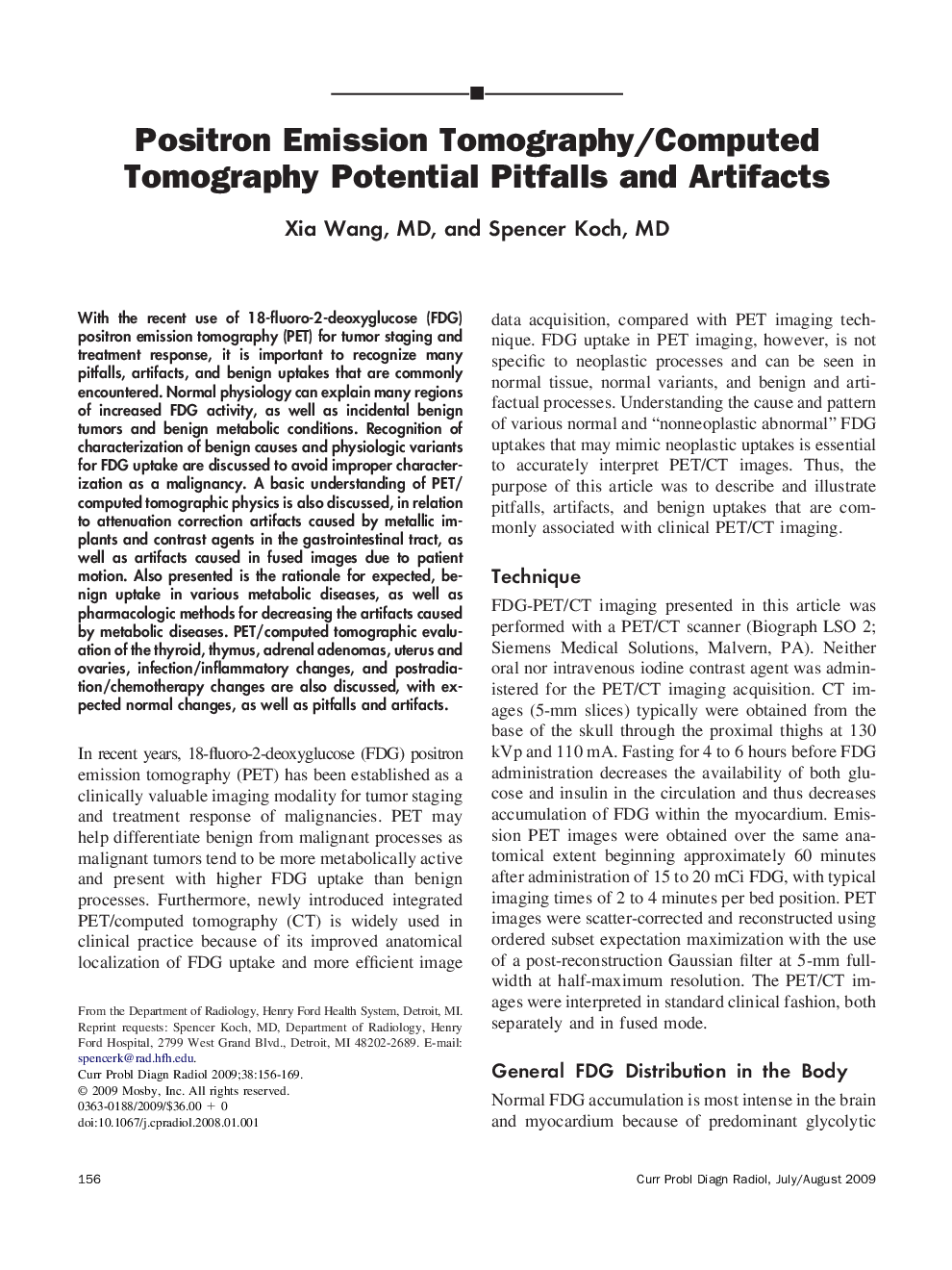| Article ID | Journal | Published Year | Pages | File Type |
|---|---|---|---|---|
| 4223813 | Current Problems in Diagnostic Radiology | 2009 | 14 Pages |
With the recent use of 18-fluoro-2-deoxyglucose (FDG) positron emission tomography (PET) for tumor staging and treatment response, it is important to recognize many pitfalls, artifacts, and benign uptakes that are commonly encountered. Normal physiology can explain many regions of increased FDG activity, as well as incidental benign tumors and benign metabolic conditions. Recognition of characterization of benign causes and physiologic variants for FDG uptake are discussed to avoid improper characterization as a malignancy. A basic understanding of PET/computed tomographic physics is also discussed, in relation to attenuation correction artifacts caused by metallic implants and contrast agents in the gastrointestinal tract, as well as artifacts caused in fused images due to patient motion. Also presented is the rationale for expected, benign uptake in various metabolic diseases, as well as pharmacologic methods for decreasing the artifacts caused by metabolic diseases. PET/computed tomographic evaluation of the thyroid, thymus, adrenal adenomas, uterus and ovaries, infection/inflammatory changes, and postradiation/chemotherapy changes are also discussed, with expected normal changes, as well as pitfalls and artifacts.
